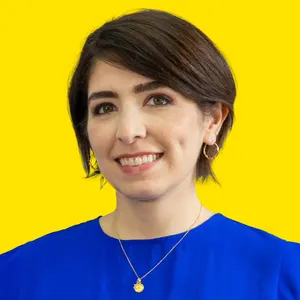SMITHSONIAN TROPICAL RESEARCH INSTITUTE
Secretary Lonnie Bunch Visits the ‘Farthest Rock From the Sun of the Smithsonian’
The Secretary visited facilites in Panama and got to see the important science being done at the Smithsonian Tropical Research Institute first-hand
:focal(1280x768:1281x769)/https://tf-cmsv2-smithsonianmag-media.s3.amazonaws.com/filer_public/4f/85/4f8588ec-25c5-4e9d-92b6-03d8e56880a9/secretary_visit_thumb.jpg)
On April 1st, Smithsonian Institution Secretary Lonnie G. Bunch arrived in Panama for his first ever visit to the Smithsonian Tropical Research Institute, accompanied by his wife Maria Marable-Bunch and his chief of staff Greg Bettwy.
Lonnie (as he asked everyone to call him), Maria and Greg were hosted by STRI Directors Josh Tewksbury and Oris Sanjur on a whirlwind tour of STRI facilities.
The first day consisted of a scenic train ride from Panama City on the Pacific end of the Panama Canal to Colon province on the Atlantic terminus to visit Punta Galeta Marine Laboratory and the Agua Salud reforestation project in the Panama Canal watershed, followed by a helicopter overflight of the canal locks at Aguas Claras and Gatun. The helicopter made a stop at the Barro Colorado Island (BCI) Research Station, located in the Panama Canal, where Lonnie, Maria and Greg toured the facilities and enjoyed a hike on one of the many island trails.
Back on the mainland they paid a visit to the STRI labs in the town of Gamboa, including the Batlab, the Butterfly project, the Amphibian Rescue Center, the Plant Physiology Greenhouse and housing for field courses.
Secretary Bunch had time for conversations with STRI Leadership, staff scientists, employees, fellows and interns about research in these facilities and the importance of academic programs.
At a BBQ dinner in Gamboa with staff and students, Director Josh Tewskbury welcomed them to the STRI community.
“This community is on a journey. We have been on a journey for a hundred years here at STRI, and it is an exceptional honor to be able to have you here to see where we are, where we have been, and where we are headed,” he said.
Secretary Bunch gave a brief speech and expressed his awe and gratitude for the STRI community. “I’ve known about STRI my whole career, and I’ve had a vision of what STRI is, but today really made me realize STRI is more special I could ever have imagined,” he said. “The amazing work you do, is science that is transformative to science, but it is science that can transform the world.”
During this event, Batlab director Rachel Page, paleontologist Felix Rodriguez, and Academic Programs manager Adriana Bilgray and coordinator Paola Gomez, were named Unsung Heroes, in recognition of their contributions to the STRI community during a time when STRI was challenged both by the pandemic and with reinventing the way we do science to guarantee inclusion, diversity, equity and access.
Secretary Bunch renewed his dedication to making the Smithsonian community a safe and welcoming place for everyone. “I’m committed to making sure that STRI and the Smithsonian is always a place of safety, that honors and respects people and that gives them a workplace where they can focus on the work but know they are also protected. Those are the key principles of my tenure as Secretary,” he said.
On his second day, Secretary Bunch got a spectacular view of the treetops in the Parque Natural Metropolitano, at the heart of Panama City, and of the city skyline from the Robert Bradley Family canopy crane.
/https://tf-cmsv2-smithsonianmag-media.s3.amazonaws.com/filer_public/96/37/96371426-45bb-4c08-ab64-caf41a88b6dc/2_stri_visit.jpg)
Afterwards, Lonnie, Maria and Greg stopped at the Center for Tropical Paleoecology and Archaeology (CTPA) in Ancon, Panama’s Museum of Freedom and Human Rights, the Naos Marine and Molecular Laboratories for a tour of the archaeological archives and the Punta Culebra Nature Center on the Amador Causeway.
They met with Board Members of Fundación Smithsonian, directors of the Panama Canal Museum (Museo del Canal), the BioMuseo (both Smithsonian Affiliate museums) and the Museum of Freedom, the Administrator of the Panama Tourism Authority (ATP) Ivan Eskildsen, Dr. Eduardo Ortega-Barria of the National Secretary of Science, Technology and Innovation (SENACYT), and STRI Leadership and staff scientists.
On the last day, the Secretary met with Stewart Tuttle Chargé d’Affaires, U.S. Embassy Panama, before visiting the Earl S. Tupper Center in Ancon, to join the Director for a Town Hall meeting in the Auditorium. Once again, Secretary Bunch shared his commitment to making the Smithsonian and STRI a safe and welcoming place for everyone. During the event, members of the live audience in the auditorium and viewers on Zoom were able to ask questions.
After the Town Hall, Lonnie and Greg visited the Presidential Palace, located in Casco Viejo, to meet with President Laurentino Cortizo Cohen and Chancellor of Foreign Affairs Erika Mouynes. In the meantime, Maria was joined by Linette Dutari, Associate Director of Communications and Public Programs and public programs manager, Jimena Pitty to visit SENACYT, in the City of Knowledge (Ciudad del Saber), where they met with Dr. Maria Heller, Director of Innovation and Learning for Science and Technology, and teachers from the Ministry of Education’s public school program and the Teach for All program in Panama.
Lonnie reflected on the invaluable science being done at STRI and how we share it with the world. “It is too important for us not to share this information,” he said. “Whether it’s history or whether it’s the work that you do, it is too important to just be in the hands of us who love it. It really needs to be in the hands of those who need it.”

/https://tf-cmsv2-smithsonianmag-media.s3.amazonaws.com/filer_public/7d/b8/7db80583-f438-4115-9c62-add909903822/1_1_stri_visit.jpg)
/https://tf-cmsv2-smithsonianmag-media.s3.amazonaws.com/filer_public/c5/34/c534148a-8ebb-436a-83c7-7d42fa6afcb7/1_2_stri_visit.jpg)
/https://tf-cmsv2-smithsonianmag-media.s3.amazonaws.com/filer_public/f1/e7/f1e7c101-170d-465e-82d9-e38f8e1f5c94/1_3_stri_visit.jpg)
/https://tf-cmsv2-smithsonianmag-media.s3.amazonaws.com/filer_public/9d/dd/9ddd4843-51fe-4813-9952-57e2e5a0513e/1_4_stri_visit.jpg)
/https://tf-cmsv2-smithsonianmag-media.s3.amazonaws.com/filer_public/7c/d4/7cd4893a-bcce-425c-bdb5-0926663b2112/1_5_stri_visit.jpg)
/https://tf-cmsv2-smithsonianmag-media.s3.amazonaws.com/filer_public/a6/bd/a6bd0837-b893-4ac8-83f1-6264063391ff/1_6_stri_visit.jpg)
/https://tf-cmsv2-smithsonianmag-media.s3.amazonaws.com/filer_public/0a/43/0a4317ba-5ee5-4c0f-be81-b96b54fed18c/1_7_stri_visit.jpg)
